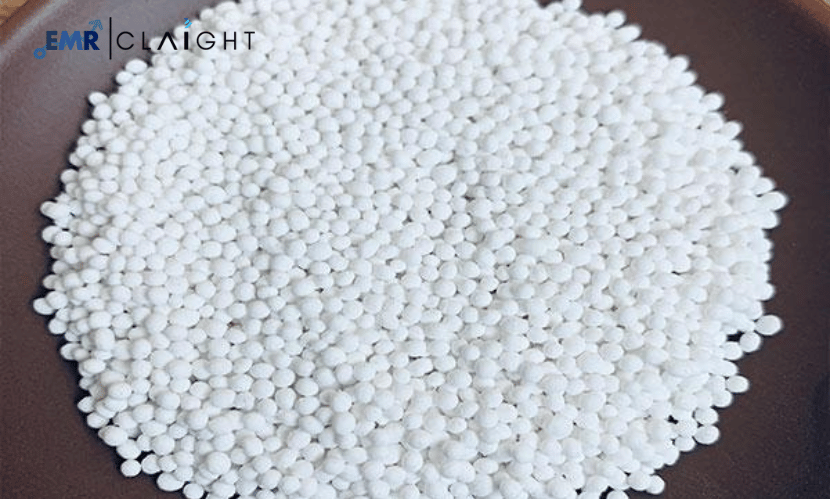Calcium sulfite is an essential inorganic compound with diverse industrial applications, primarily in water treatment, gas scrubbing, and as a food additive. Known for its ability to neutralise sulfur dioxide in emissions and its preservative properties, it plays a vital role in environmental management and the food industry. Establishing a calcium sulfite manufacturing plant in 2025 offers a promising business opportunity, driven by increasing environmental regulations and demand for effective treatment solutions. This article provides a comprehensive guide to the production processes, raw materials, applications, and market trends relevant to calcium sulfite manufacturing.
Market Overview
The calcium sulfite market is expanding steadily, driven by its dual applications in environmental protection and food preservation. Its use in flue gas desulfurisation (FGD) systems for reducing sulfur dioxide emissions is a major growth driver, particularly in regions with strict environmental regulations. Additionally, its role as a preservative and antioxidant in the food industry enhances its demand. Asia-Pacific leads the market due to its growing industrial activities and adoption of environmental compliance measures, while North America and Europe contribute significantly with their focus on sustainable practices.
Get a Free Sample Report with Table of Contents@ https://www.expertmarketresearch.com/prefeasibility-reports/calcium-sulfite-manufacturing-plant-project-report/requestsample
Key Raw Materials
- Calcium Compounds: Typically sourced from calcium carbonate or calcium hydroxide, these form the base for calcium sulfite production.
- Sulfur Dioxide (SO₂): Reacts with calcium compounds to form calcium sulfite.
- Water: Used as a medium for the reaction and in purification processes.
Manufacturing Process
The production of calcium sulfite involves several carefully controlled steps to ensure quality and efficiency:
- Raw Material Preparation: Calcium compounds and sulfur dioxide are sourced and prepared for the reaction.
- Reaction Process: Sulfur dioxide is passed through a slurry of calcium compounds, resulting in the formation of calcium sulfite.
- Filtration and Purification: The product is filtered to remove impurities and achieve the desired purity level.
- Drying: The purified product is dried to obtain the solid calcium sulfite compound.
- Packaging: The final product is packaged in moisture-resistant containers to preserve quality during storage and transportation.
Plant Setup Essentials
- Location: Select a site near industrial hubs with access to raw materials and efficient logistics.
- Machinery: Invest in reactors, filtration systems, and drying equipment designed for chemical manufacturing.
- Skilled Workforce: Employ trained personnel familiar with chemical processing and safety standards.
- Utilities: Ensure reliable access to electricity, water, and waste management systems for smooth operations.
- Regulatory Compliance: Adhere to environmental and safety regulations to maintain sustainable production practices.
Applications of Calcium Sulfite
- Flue Gas Desulfurisation: Used in industrial scrubbers to reduce sulfur dioxide emissions, aiding in environmental compliance.
- Water Treatment: Acts as a dechlorinating agent, improving water quality in municipal and industrial systems.
- Food Industry: Serves as a preservative and antioxidant to extend the shelf life of food products.
- Industrial Processes: Utilised in chemical synthesis and as a reducing agent in specific applications.
Safety and Quality Considerations
- Chemical Handling: Workers should use appropriate PPE, including gloves, masks, and goggles, when handling raw materials and products.
- Storage: Store calcium sulfite in dry, sealed containers to prevent moisture absorption and degradation.
- Ventilation: Maintain proper ventilation in production areas to manage sulfur dioxide fumes.
- Quality Control: Implement rigorous testing protocols to ensure product purity and compliance with industry standards.
Challenges in Manufacturing
- Raw Material Costs: Fluctuations in the price of calcium compounds and sulfur dioxide can impact production costs.
- Regulatory Compliance: Adhering to strict environmental and safety regulations requires significant planning and investment.
- Market Competition: Competing with established manufacturers necessitates innovation and superior product quality.
- Operational Efficiency: Maintaining consistent quality across batches demands skilled monitoring and advanced equipment.
Opportunities in the Industry
The growing emphasis on environmental sustainability presents significant opportunities for calcium sulfite manufacturers. Expanding into emerging markets with industrial growth and environmental regulations can boost demand. Collaborating with industries such as power generation, water treatment, and food processing for customised solutions can enhance market reach. Additionally, investing in research and development to improve production efficiency and explore innovative applications for calcium sulfite aligns with global trends toward green technologies.
